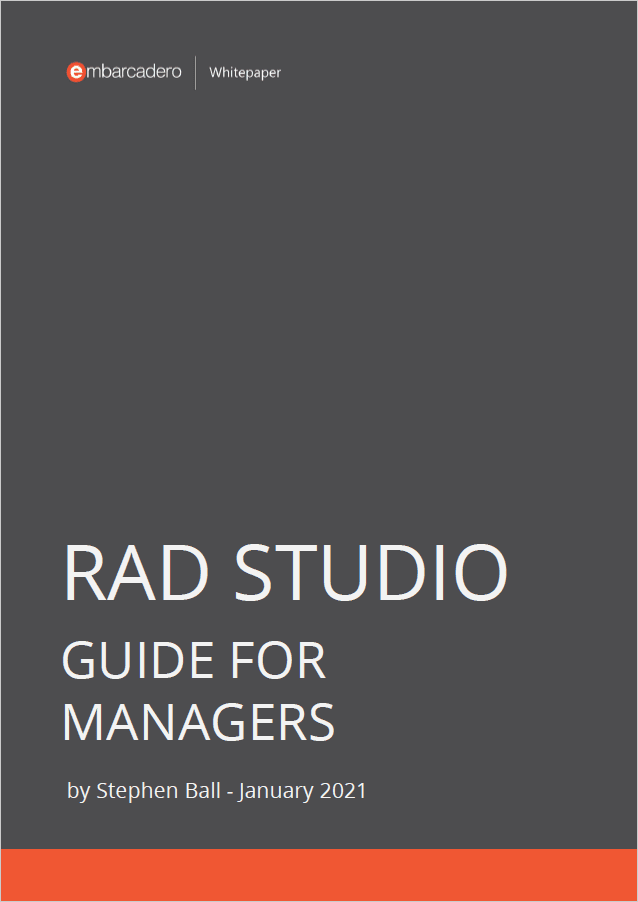

C is one of the most powerful programming languages. There are a great selection of C++ windows development tools, IDE’s and C++ compilers which can also work with C programs. Using a fast and reliable C or C++ compiler for Windows is very important for beginners and professionals since it helps C/C++ developers in remembering which language features exist, how to use them, and even detect errors when we get them wrong.
Put simply, you can run C and C++ code by the C++ compilers and build tools like C++ Builder. C++ Builder has free C++ Builder Community Edition and C++ Builder Professional / Architect / Enterprise Versions. So, how we can exit from a running C or C++ app? How we can exit from a loop in a C or C++ app but not from the main program? Is return 0; enough to exit successfully from your app? Let’s see it all with a few examples.
Table of Contents
How to exit a running C or C++ program?
- If you have C or C++ application running in the Command Prompt or terminal, and it is in loop or you want to end this running program, just press Ctrl+C to end the app.
- If you are running a C or C++ app in the IDE, In all IDEs, there is a STOP button to stop the application from running. You can use the PAUSE button to Pause and continue the apps too.
- In Windows, If you are not able to end your C++ application, the last chance is to use Task Manager. Right-click to the taskbar, choose Task Manager, and In the Task Manager, find your C++ app listed in the Task Manager and right-click on it then end that task.
How to properly exit a program in C?
In C and C++ programs we use return to exit a program in C. Here’s an example below which is a “Hello World” C example that can be run with C++ Builder.
|
1 2 3 4 5 6 7 8 9 |
#include <stdio.h> int main() { printf("Hello World"); getchar(); return 0; } |
In this example above we define main() function as a integer (int) function, that means we should return a integer value. Here, we print a text with the printf() function and then we wait to get a character input (key press) with getchar(); function. Sometimes this is necessary to see results when running it. Then we exit and return 0; which means our main app successfully ran and exited with no errors.
In most C languages you do not need to define the main() program as int. That means you don’t need to return 0. For example, this program will exit automatically,
|
1 2 3 4 5 6 7 8 |
#include <stdio.h> main() { printf("Hello C Programmer"); getchar(); } |
You can use return in the middle or end of your main program to exit from a C program. For example,
|
1 2 3 4 5 6 7 8 9 |
#include <stdio.h> main() { printf("Hello C Developer"); getchar(); return; } |
The example above is a void main() function. Some C compilers require the main function to be defined as void. Again, you do not need to use return; because it is a void function, as in example below,
|
1 2 3 4 5 6 7 8 |
#include <stdio.h> void main() { printf("Hello C World"); getchar(); } |
How to exit a program in C++ Builder?


C++ Builder is the easiest and fastest C and C++ IDE for building simple or professional applications on the Windows, macOS, iOS & Android operating systems. It is also easy for beginners to learn with its wide range of samples, tutorials, help files, and LSP support for code. C++ Builder comes with RAD Studio and the award-winning VCL framework for high-performance native Windows apps and the powerful FireMonkey (FMX) framework for cross-platform UIs.


You can simply run your application in Debug mode and use STOP button to exit from your C or C++ application.
You can download the free C++ Builder Community Edition here: https://www.embarcadero.com/products/cbuilder/starter.
Professional developers can use the Professional, Architect or Enterprise versions of C++ Builder. Please visit https://www.embarcadero.com/products/cbuilder.
Download RAD Studio 11 Now
See What’s New in RAD Studio 11
Design. Code. Compile. Deploy.
Start Free Trial
Free C++Builder Community Edition

